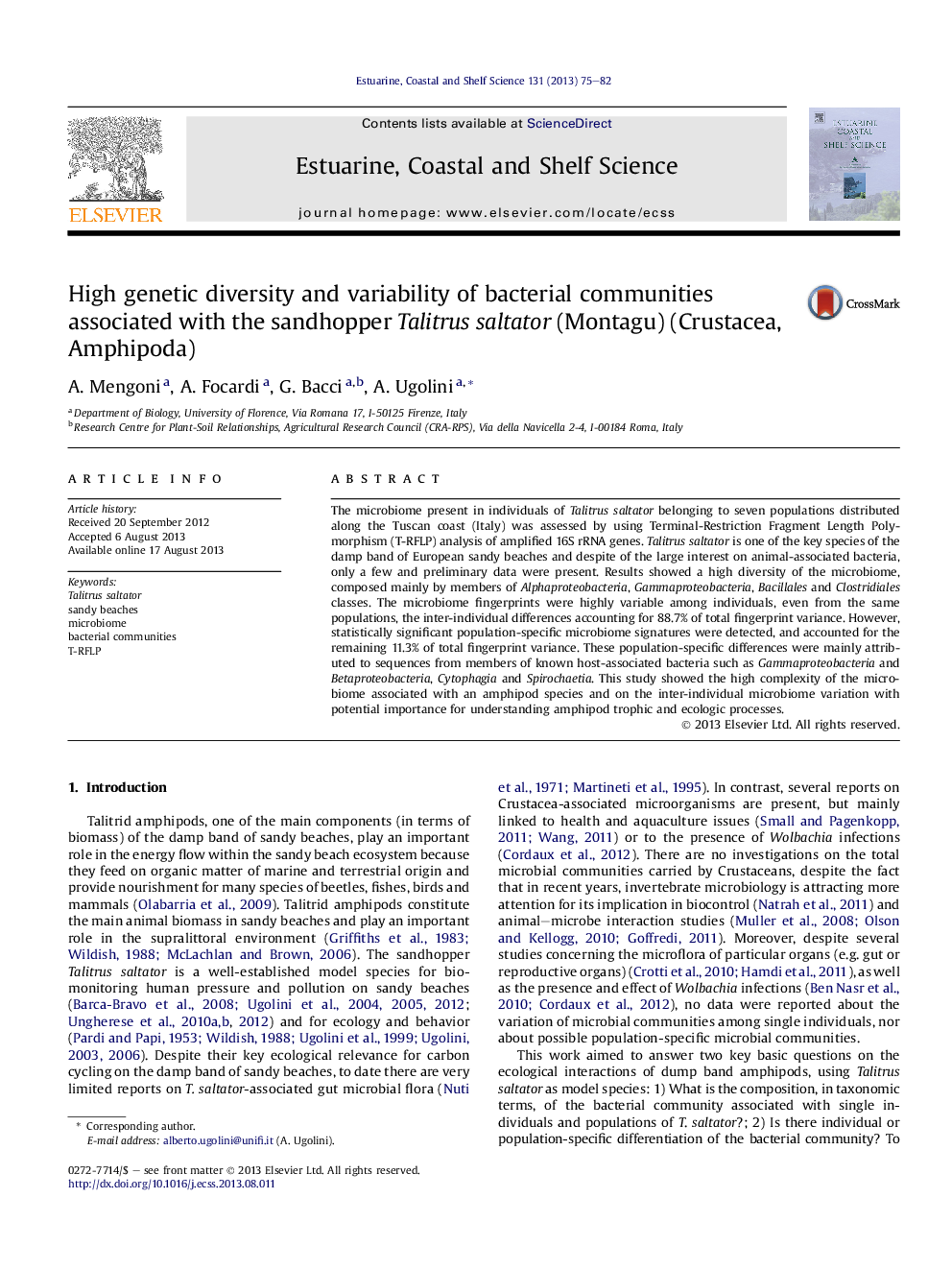| Article ID | Journal | Published Year | Pages | File Type |
|---|---|---|---|---|
| 6385073 | Estuarine, Coastal and Shelf Science | 2013 | 8 Pages |
â¢We analyzed the microbiome profiles of the sandohopper Talitrus saltator.â¢Highly variable microbiomes were found among individuals.â¢T. saltator populations were also differentiated on the basis of their microbiomes.â¢Alpha- and Beta-proteobacteria, Clostridiales and Bacillales were found.
The microbiome present in individuals of Talitrus saltator belonging to seven populations distributed along the Tuscan coast (Italy) was assessed by using Terminal-Restriction Fragment Length Polymorphism (T-RFLP) analysis of amplified 16S rRNA genes. Talitrus saltator is one of the key species of the damp band of European sandy beaches and despite of the large interest on animal-associated bacteria, only a few and preliminary data were present. Results showed a high diversity of the microbiome, composed mainly by members of Alphaproteobacteria, Gammaproteobacteria, Bacillales and Clostridiales classes. The microbiome fingerprints were highly variable among individuals, even from the same populations, the inter-individual differences accounting for 88.7% of total fingerprint variance. However, statistically significant population-specific microbiome signatures were detected, and accounted for the remaining 11.3% of total fingerprint variance. These population-specific differences were mainly attributed to sequences from members of known host-associated bacteria such as Gammaproteobacteria and Betaproteobacteria, Cytophagia and Spirochaetia. This study showed the high complexity of the microbiome associated with an amphipod species and on the inter-individual microbiome variation with potential importance for understanding amphipod trophic and ecologic processes.
Graphical abstractDownload high-res image (217KB)Download full-size image
